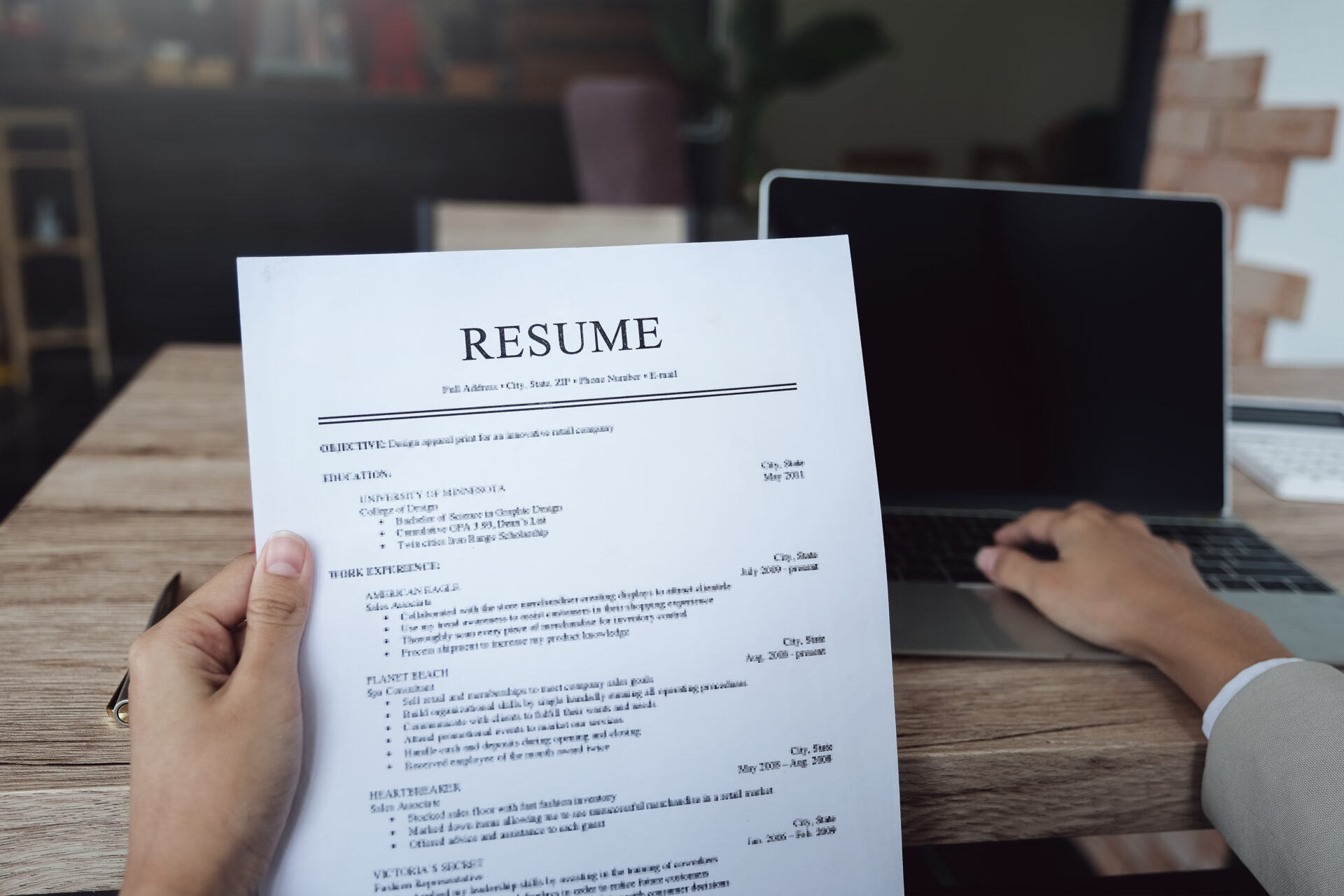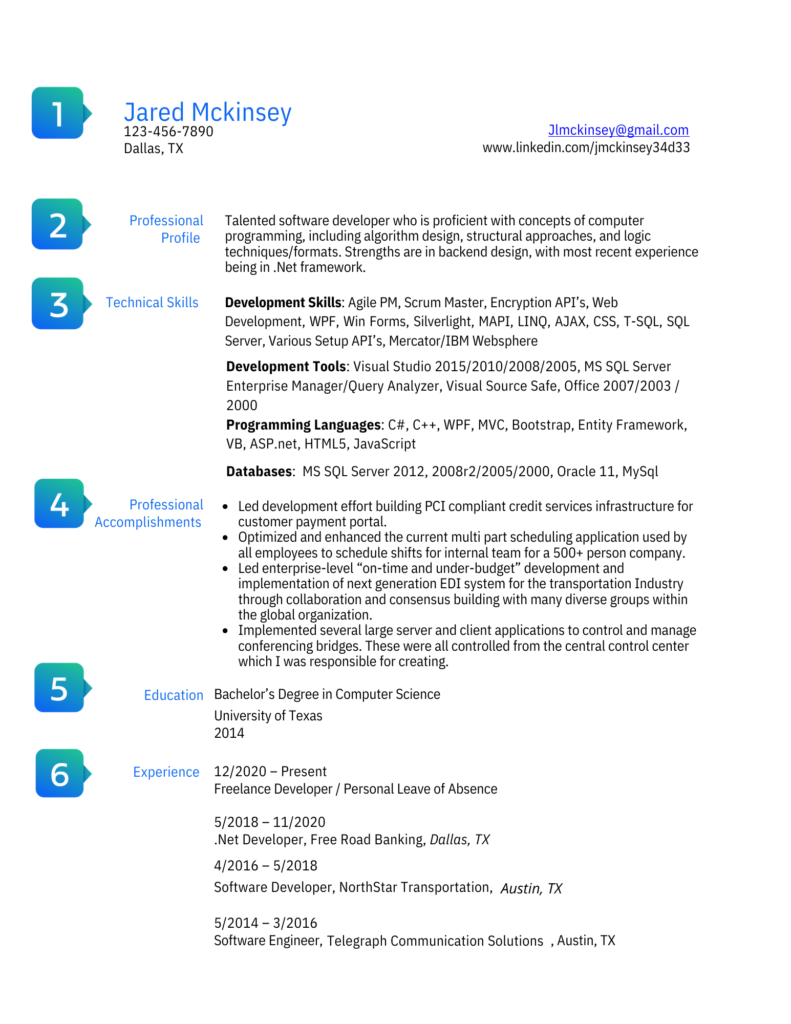
If you’re returning to the workforce after time off, updating your resume should be your first priority. Your resume will help you get your foot in the door, showcase your skills, and convince hiring managers to pick up the phone and call you for an interview.
Follow these tips to create a resume for returning to work, and use the sample resume below for inspiration as you position yourself as a standout candidate.
What to Focus on in a Return to Work Resume
Prioritizing your strengths
Your job-specific strengths should be showcased more prominently than your work experience if you’ve been out of the workforce for a long time. It’s vital to instantly convey to hiring managers how you’re qualified for the job they’re hiring for, which can be done by moving the skills section of your resume to the top or using a format that places less of an emphasis on previous jobs (more on this below).
Modernizing your old resume
Your resume from before you left the workforce probably has a lot of good material, and your prior experience is still relevant. There’s no need to trash it and build a new resume from scratch completely. Use your old resume as a starting point, then modernize it.
The professional world has changed significantly in the last several years. Resume design norms have evolved, as has the way companies hire. Your resume should be current for the year you’re applying and adjusted to the post-pandemic world.
Why Do You Need a Resume for a Return to Work?
It’s the first thing hiring managers see
Your professionalism and charm might help you land the job… but first, you need to get the chance to exercise them by landing an interview. Your resume is one of the first things hiring managers see when you throw your hat in the ring for an open position, so getting it right is crucial to making a good first impression and breaking back into the workforce.
Highlight your transferable skills
Since you don’t have a current job for hiring managers to go on as a reference point, you need to help them see how your skills are relevant. What makes you qualified to do the job? Your resume connects your background from your prior career and the skills you developed during your time away from the workforce to the position you want now.
When Should You Use a Return to Work Resume?
Use this resume to:
- Return to work after taking time off
- Change careers after a gap in employment
- Build professional connections that will help you land a job
Common Return to Work Resume Challenges and How to Overcome Them
Accounting for a long gap in employment
You have two options for handling a long employment gap on a resume. Your first option is to cite it directly by listing what you were doing during that time as an entry under experience, i.e., ‘stay-at-home mom.’ This makes certain hiring managers know the reason for the gap and may keep them from making negative assumptions. Your second option is to downplay your employment gap by making other sections of your resume more prominent or using an alternative format where employment is a secondary focus, like a functional resume.
Demonstrating impressive accomplishments
It’s much easier to show how you can make an impact on an organization if you have a recent track record of closing big deals or exceeding performance goals. Since you don’t have recent work accomplishments to show, however, you’ll need to sell yourself as a candidate in other ways. Use your resume to highlight achievements and qualifications you’ve gained in other non-work experiences, such as participating in volunteer work or completing a specialized training program.
Return to Work Resume Format and Key Components
A chronological, functional, or combination resume format is a good choice for returning to work.

Your resume should include these components:
- Contact information
Begin with your name, address, phone number, and email address. - Summary
A summary section is useful for job seekers who are returning to work, acting as your “elevator pitch” for why you’re a great candidate. Use it to sum up one to two of your strongest skills and highlight what you’d bring to the specific position and company. - Skills
Zero in on a handful of your top hard and soft skills and list them in a prominent section. As often as possible, use skills that are mentioned as requirements in the job description. This will help your resume get noticed by hiring managers and automated applicant tracking systems used to screen candidates. - Accomplishments
Share your most noteworthy work achievements that are both measurable and related to the job you are applying for. It is important to show the hiring manager that you are results-driven and have a history of exceeding expectations. - Education
List your degree and the school(s) you attended. - Experience
List your work experience in reverse chronological order. If you’re using a functional resume format, group your experience or accomplishments by type–i.e., technical experience, leadership experience, etc. Under each item, give specific, detail-rich examples of your accomplishments in that position or area, citing numbers and quantifiable achievements as much as possible.


